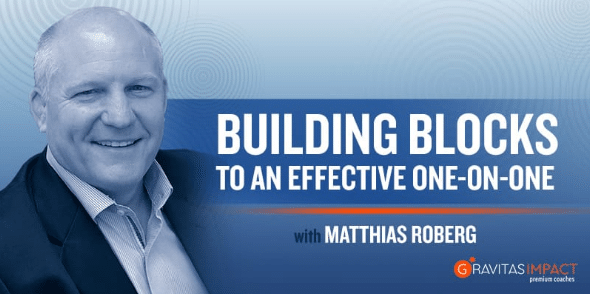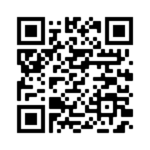
The one-on-one meeting is widely regarded as a fundamental, highly-effective business practice that can yield excellent results for leaders and employees alike – but are enough businesses utilizing this asset?We recently spoke to Gravitas Impact premium coach Matthias Roberg – who works with GROW out of South Africa – about this critical habit. Roberg provided some deep insights regarding the impact of one-on-ones, as well as the best ways to use and lead them. Read on to see what he had to say.
Underused & Undervalued
According to Roberg, the one-to-one is absolutely essential for businesses. They help build strong relationships between leaders and staff- which in turn create a better, more productive work environment. Unfortunately, when asked if enough businesses were properly employing the one-on-one, Roberg responds with an emphatic “No!”
“Many business leaders fail to have one-on-ones in the first place, and those that do often don’t have them consistently,” Roberg said. “It really comes down to a question of control. Those business leaders who believe that they control their destiny make time for the important things like one-on-ones. The rest are controlled on by their environment and therefore spend their time surviving from one crisis to another.”
“Given the busy nature of our lives today, there is a perception among leaders that as long as they have the occasional one-on-one, and do it really well, then they don’t need to have them regularly,” he said. “But building a quality relationship is more about time and consistency. Quality emerges when human beings connect as people, and that takes time.”
Components of a Great One-on-One
When discussing the components of a productive one-on-one, Roberg left no stone unturned. Pulling from years of experience in business coaching, he laid out a detailed, comprehensive roadmap from start to finish.
Scheduling & Consistency
Any effective one-on-one strategy starts with the decision to actually have the meetings and stick with them. When it comes to timing and scheduling, Roberg suggests starting as early as possible.
“Book the times early, and once they’re loaded in, commit to not changing them,” Roberg said. “If the leader is serious about leading, this is how they prove it.”
While the frequency may vary depending on logistics, Roberg believes leaders should strive for a minimum of one meeting a month per employee.
“Meetings may have different rhythms,” he said, “but consistency should always be an imperative.”
Roberg also says leaders should give employees enough lead time to prepare their thoughts before the meeting.
Confidentiality
One goal of the one-on-one is to build mutual respect, appreciation, trust, and common understanding. This comes from committing to a relationship where individuals feel they can be honest and vulnerable, which is the precursor to building this trust.
In order to do this, Roberg says, leaders should stress the confidentiality of these meetings.
“Confirm the confidentiality parameters,” he said. “This will establish safety and promote openness, reconfirming the objective of collaborating, learning, understanding and, if needs be, correcting behavior or performance.”
Context
To ensure everyone comes to the table prepared – and that the desired outcome is achieved – leaders should provide adequate context to the employee before the one-on-one meeting. It’s important to give enough warning to allow both parties to gather their thoughts ahead of time.
“The person setting up the meeting should give some clarity on why the meeting is taking place, as well as what they want and don’t want from the meeting,” Roberg said. “This is true even if the meeting has no other purpose than to catch up or share progress. This forms a foundation and boundaries that keep both parties on track. The other advantage is that it promotes safety by reducing the chance of surprise topics emerging, which either party may not be prepared for.”
Setting
Roberg advises against holding the one-on-one across a desk, saying that this inhibits good conversation. Instead, he encourages leaders to hold the meeting in a comfortable and relaxed setting to promote good dialogue, free from the negative impact of rank.
Additionally, leaders need to take the steps to ensure that the conversation will not be interrupted, even if this means taking the meeting offsite to a more neutral location. Doing so can also increase the feeling of privacy and help employees feel more comfortable and willing to open up.
Follow Up
When the meeting is over, Roberg says it’s important to maintain the ethical boundaries, such as the confidential nature of the meeting. This is critical to building trust with employees. Any agreed-upon actions should be confirmed, and there should be enough detail provided to the employee so that there’s no ambiguity in what’s expected between now and the next one-on-one.
Above all, leaders should remember that the primary goal of any one-on-one is to build a strong relationship based on listening, shared learning, understanding, and collaboration. Although it takes dedication and work on part of the leader, Roberg says the results will greatly benefit the company.
“Once people feel safe to be themselves and understand that the opportunity for honest, pro-active conversation exists without fear of reprisal, they will be more inclined to take ownership, engage with their work and be more productive.”
As a business leader, how do you conduct your one-to-one meetings? What kind of advice would you offer up? Let us know in the comments!
